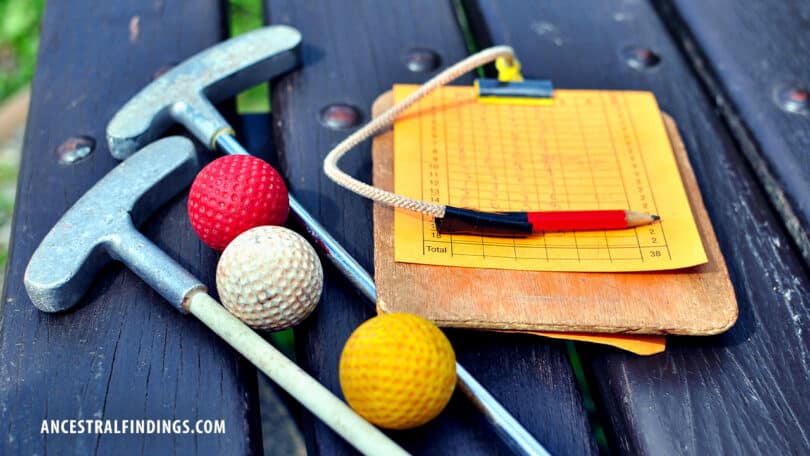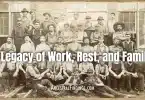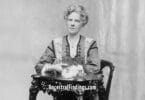Miniature golf is one of those games that almost everyone has played at least once. Whether it was a first date, a family outing, or just a fun way to spend an afternoon, the game has a way of bringing out the kid in all of us. But have you ever wondered where it all started? Let’s take a playful swing through the history of miniature golf, from its surprising beginnings to the vibrant game it is today—and discover how this pastime connects to the broader context of our cultural and genealogical heritage.
It All Started with a Putt in Scotland
Our journey begins in Scotland in the mid-1800s, where the sport of golf was already a big deal. However, there was a bit of a dilemma: Victorian society had some pretty strict rules, especially for women. It was considered improper for a woman to raise a golf club above her shoulder. So, what were the ladies to do? They did what any resourceful person would do—they created their own version of the game.
This early form of miniature golf was all about putting. The Ladies’ Putting Club of St. Andrews, established in 1867, is one of the earliest examples. Picture it: a beautiful, smaller course designed for precision rather than power. It was a hit and laid the groundwork for the game we know and love today.
The American Twist: Garnet Carter’s “Tom Thumb Golf”
Fast forward to the 1920s, when miniature golf made its way to the United States. Here’s where things get interesting. Garnet Carter, an entrepreneur from Tennessee, had a flair for the creative. In 1926, he opened a course called “Tom Thumb Golf” near his hotel on Lookout Mountain, Georgia. Unlike the simple putting greens of Scotland, Carter’s course was a whole different ball game. He added quirky obstacles like windmills, castles, and even mechanical hazards—turning the game into a fun challenge that quickly caught on.
Carter’s Tom Thumb Golf became so popular that within a few years, miniature golf courses started popping up all over the country. It wasn’t just a game; it was an experience. And with that, miniature golf in America was off and running.

The Roaring Twenties and the Mini-Golf Boom
The late 1920s and early 1930s were the golden years of miniature golf in the U.S. Imagine this: by 1930, there were over 25,000 miniature golf courses across the country! New York City alone had more than 150 rooftop courses. The game was everywhere.
What made it so popular? It was affordable, accessible, and fun for everyone. You didn’t need a fancy country club membership or expensive equipment—just a putter, a ball, and a few friends. Even during the tough times of the Great Depression, people found ways to keep playing, sometimes building homemade courses with whatever materials they could find. Miniature golf had become part of the American fabric.
This period is particularly interesting for genealogists because it reflects a shift in how leisure time was spent and how communities came together during difficult times. Understanding the social context of your ancestors’ lives can offer deeper insights into their daily experiences and values.
A Post-War Comeback
After World War II, America was ready to have some fun again, and miniature golf saw a big comeback. The 1950s and 1960s brought new and improved courses. These weren’t just any courses; they were themed wonderlands. Whether it was a tropical island or a space station, these courses offered a mini-adventure with every game.
This era also saw the standardization of course design, making the game more structured and competitive. It wasn’t just about fun anymore—people were getting serious about their putting skills. And as the game spread to other parts of the world, it continued to grow.
For those tracing their family history, this post-war era often marks a time of migration, new family traditions, and changing lifestyles, all of which are reflected in the entertainment choices of the time, including the rise of miniature golf as a family-friendly activity.
Miniature Golf Goes Pro: The European Spin
While Americans were enjoying their themed courses, Europe took miniature golf in a different direction. Over there, it wasn’t just a game—it became a sport. In countries like Sweden and Germany, miniature golf became super competitive, with players even using different balls for different types of shots. Yes, that’s right—multiple balls, each designed for a specific purpose.
This level of strategy added a new dimension to the game, and soon enough, competitive miniature golf leagues and clubs started forming. By 1963, the World Minigolf Sport Federation (WMF) was established, and the game took on an international flair. Today, there are tournaments where players from around the world compete for the title of world champion. It’s serious business!
The Game Today: Fun for Everyone
These days, miniature golf is as popular as ever. It’s hard to find a town without at least one course where people can test their putting skills. Themed courses are still a big hit, but now you can also find glow-in-the-dark courses, virtual reality courses, and even courses with augmented reality elements. Miniature golf has embraced modern technology while still keeping that fun, laid-back vibe we all love.
What makes miniature golf so enduring? Maybe it’s the nostalgia, the challenge, or just the pure, simple joy of trying to sink that tricky putt. Whatever it is, miniature golf has a way of bringing people together, whether for a friendly competition or just some good old-fashioned fun.
As a genealogist, exploring how recreational activities like miniature golf became part of our cultural landscape can provide unique perspectives on the lives of our ancestors and the communities they lived in. Leisure activities often reflect broader societal trends and can offer clues about social changes over time.
Wrapping It Up
So, there you have it—a whirlwind tour through the history of miniature golf. From its origins in Scotland to the themed courses of America and the competitive circuits of Europe, miniature golf has come a long way. It’s a game that’s been loved by generations and continues to be a go-to activity for people of all ages.
Next time you find yourself on a miniature golf course, remember that you’re not just playing a game—you’re participating in a rich tradition that’s been enjoyed by millions of people over the years. And who knows? Maybe your next putt will be a part of miniature golf history, too.
As you think about your own family history, consider how the leisure activities they enjoyed might have shaped their lives and how those traditions have been passed down to you.
Further Reading on the History of Miniature Golf
If you’re curious to dive even deeper into the history of miniature golf, here are some books you can check out:
“Miniature Golf” by John Margolies and Nina Garfinkel
This book is a colorful history of miniature golf, filled with vintage photographs, cartoons, and documents from the late 1920s. It provides a fun and detailed look at the development of the game in America.
“The Minibook of Minigolf” by Tim Hollis
An entertaining exploration of America’s miniature golf courses featuring beautiful photography and historical insights. It’s a great resource for anyone interested in the growth of mini-golf.
“Boydton” by John Edward Hinkel
While not entirely focused on miniature golf, this book touches on various historical aspects that include the rise of entertainment and leisure activities like mini-golf in small-town America.







